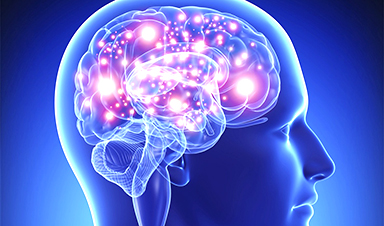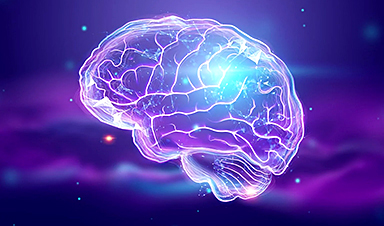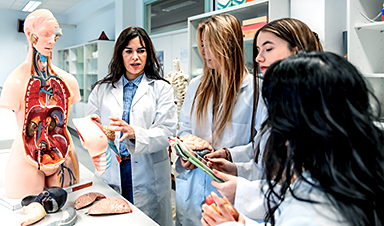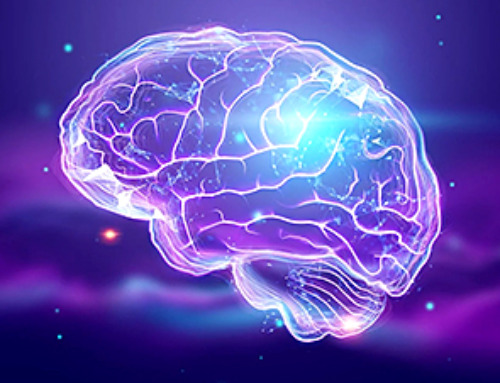Probably you’ve heard about hacking smartphones, emails, cards, computers. Even hacking elections. But what about hacking your body? What?! This concept is called biohacking and it’s really all about self-improvement. The possibilities are endless, all around the idea that we can change our bodies and our brains using technology. Maybe you’ve read about a former NASA employee injecting himself with DNA using gene-editing technology CRISPR. Maybe you’ve heard of some folks engaging in “dopamine fasting” or you have a colleague who’s had a chip implanted in his hand. These are all types of biohacking also known as DIY biology. It’s a difficult term to explain because it involves a huge range of activities, from performing science experiments to pumping a younger person’s blood into veins in the hope that it’ll fight old age. (is a real thing, and it’s called a young blood transfusion).
Some biohackers have science PhDs; others are complete amateurs, but those who have more notoriety are the ones who experiment on their own bodies with the hope of boosting their physical and cognitive performance. The more data you have on your body’s mechanical functions, the more you can be optimized. Yeah! Creepy! But it’s true. These ones are called grinders or transhumanists. They use implants to augment their lives. The implants allow them to do everything from opening doors to monitoring their glucose levels subcutaneously. Even for some kinds of track sports such as the 100-meter sprint, athletes who run on carbon-fiber blades are able to outperform those who run on natural legs. Also failing organs would be replaced soon by longer-lasting high-tech versions just as carbon-fiber blades could replace the flesh, blood, and bone of natural limbs. Some might consider this unethical. For others will be of enormous benefit, but its use still raises all sorts of issues. In the near future, we can also expect the arrival of contact lenses that can take pictures or video, universal language translator earbuds that allow us to communicate anywhere in the world, and exosuits that increase physical strength. They will also lead to implications around which job opportunities are available to those with and without augmented abilities. Also driving a car while writing emails or playing video games while being physically paralyzed is a future not-too-far-off.
But the most powerful is the implantable brain-machine interface. (BMI) These devices will dramatically alter the ways in which we communicate with each other. BMI is a tiny wire very close to one of the brain neurons, with whom you can record the electrical activity it generates and send it to a computer. Record enough of these signals from the right area of the brain and it becomes possible to control computers, robots, or anything else you might want, simply by thinking about moving. But in your brain like in mine, microscopic cells called neurons are sending signals back and forth to each other all the time. Everything we think, do, and feel as interact with the world around us is the result of the activity of these 80 billion or so neurons. Damn difficult to record all of these neurons and then to make them do wherever we need. In a few labs around the world, scientists have been implanting these devices into the brains of people who have lost the ability to control their arms or hands for over a decade. The results were promising but Brain-to-brain communication? Enhanced memory? still closed. Current BMI’s are relatively slow and make mistakes once in a while (For instance, the computer thinks you imagined left-hand movement, while in fact, you imagined right-hand movement). These devices may be portrayed as being able to “mind read” and “decode thoughts” or “stoking fears” that they will unearth innermost secrets. But we didn’t make our brains and we still don’t really know very well how they work. Much less how to “invade” them safely and successfully. (Facebook announced in 2017 it wanted to create a wearable device that would allow typing from the brain at 100 words per minute instead of Neuralink who is striving for 40 words per minute — which is around our average typing speed.) Historically, hardware limitations have caused them to come into contact with more than one region of the brain or produce interfering scar tissue. Pulses from the visual center aren’t like those produced when formulating speech, and it’s sometimes difficult to identify signals’ origination points. All of the challenges haven’t discouraged Facebook, Synchron, Neuralink, Paradromics, Kernel, Ctrl-labs, and others from chasing after a brain-computer interface…and for a new brave world. The development of such a Human Brain Cloud Interface B/CI would enable people to directly access information from the Internet, store their learnings on the cloud, and work together with other connected brains artificial or human. It will be a medium of strange connections past and future. The technologies are in scientific research called “neuralnanorobotics”…
News
New Once-a-Week Shot Promises Life-Changing Relief for Parkinson’s Patients
A once-a-week shot from Australian scientists could spare people with Parkinson’s the grind of taking pills several times a day. The tiny, biodegradable gel sits under the skin and releases steady doses of two [...]
Weekly injectable drug offers hope for Parkinson’s patients
A new weekly injectable drug could transform the lives of more than eight million people living with Parkinson's disease, potentially replacing the need for multiple daily tablets. Scientists from the University of South Australia [...]
Most Plastic in the Ocean Is Invisible—And Deadly
Nanoplastics—particles smaller than a human hair—can pass through cell walls and enter the food web. New research suggest 27 million metric tons of nanoplastics are spread across just the top layer of the North [...]
Repurposed drugs could calm the immune system’s response to nanomedicine
An international study led by researchers at the University of Colorado Anschutz Medical Campus has identified a promising strategy to enhance the safety of nanomedicines, advanced therapies often used in cancer and vaccine treatments, [...]
Nano-Enhanced Hydrogel Strategies for Cartilage Repair
A recent article in Engineering describes the development of a protein-based nanocomposite hydrogel designed to deliver two therapeutic agents—dexamethasone (Dex) and kartogenin (KGN)—to support cartilage repair. The hydrogel is engineered to modulate immune responses and promote [...]
New Cancer Drug Blocks Tumors Without Debilitating Side Effects
A new drug targets RAS-PI3Kα pathways without harmful side effects. It was developed using high-performance computing and AI. A new cancer drug candidate, developed through a collaboration between Lawrence Livermore National Laboratory (LLNL), BridgeBio Oncology [...]
Scientists Are Pretty Close to Replicating the First Thing That Ever Lived
For 400 million years, a leading hypothesis claims, Earth was an “RNA World,” meaning that life must’ve first replicated from RNA before the arrival of proteins and DNA. Unfortunately, scientists have failed to find [...]
Why ‘Peniaphobia’ Is Exploding Among Young People (And Why We Should Be Concerned)
An insidious illness is taking hold among a growing proportion of young people. Little known to the general public, peniaphobia—the fear of becoming poor—is gaining ground among teens and young adults. Discover the causes [...]
Team finds flawed data in recent study relevant to coronavirus antiviral development
The COVID pandemic illustrated how urgently we need antiviral medications capable of treating coronavirus infections. To aid this effort, researchers quickly homed in on part of SARS-CoV-2's molecular structure known as the NiRAN domain—an [...]
Drug-Coated Neural Implants Reduce Immune Rejection
Summary: A new study shows that coating neural prosthetic implants with the anti-inflammatory drug dexamethasone helps reduce the body’s immune response and scar tissue formation. This strategy enhances the long-term performance and stability of electrodes [...]
Scientists discover cancer-fighting bacteria that ‘soak up’ forever chemicals in the body
A family of healthy bacteria may help 'soak up' toxic forever chemicals in the body, warding off their cancerous effects. Forever chemicals, also known as PFAS (per- and polyfluoroalkyl substances), are toxic chemicals that [...]
Johns Hopkins Researchers Uncover a New Way To Kill Cancer Cells
A new study reveals that blocking ribosomal RNA production rewires cancer cell behavior and could help treat genetically unstable tumors. Researchers at the Johns Hopkins Kimmel Cancer Center and the Department of Radiation Oncology and Molecular [...]
AI matches doctors in mapping lung tumors for radiation therapy
In radiation therapy, precision can save lives. Oncologists must carefully map the size and location of a tumor before delivering high-dose radiation to destroy cancer cells while sparing healthy tissue. But this process, called [...]
Scientists Finally “See” Key Protein That Controls Inflammation
Researchers used advanced microscopy to uncover important protein structures. For the first time, two important protein structures in the human body are being visualized, thanks in part to cutting-edge technology at the University of [...]
AI tool detects 9 types of dementia from a single brain scan
Mayo Clinic researchers have developed a new artificial intelligence (AI) tool that helps clinicians identify brain activity patterns linked to nine types of dementia, including Alzheimer's disease, using a single, widely available scan—a transformative [...]
Is plastic packaging putting more than just food on your plate?
New research reveals that common food packaging and utensils can shed microscopic plastics into our food, prompting urgent calls for stricter testing and updated regulations to protect public health. Beyond microplastics: The analysis intentionally [...]





















